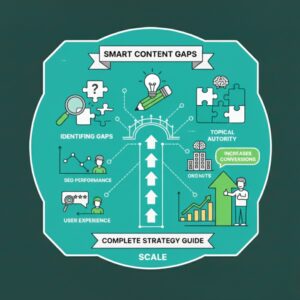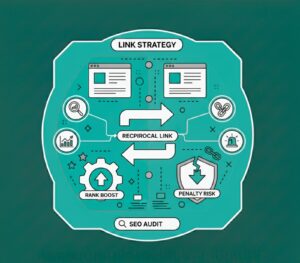Future-Proof Your Content with Semantic Search: A Complete Guide
Blogs | Category
Written By: Lauren Davison
Introduction
The internet is different now. People do not just type single words anymore. They ask questions, explain what they need, or search like they are talking to someone. This shift has made semantic search an essential tool.
It does not just look for exact words. It tries to understand what people really mean. This is a big deal for anyone making content. Your blog posts, articles, or guides can actually connect with readers instead of getting lost online.
Think about content that answers questions even before people finish asking them. That is the strength of semantic search. In this blog, we will show you what it is, why it matters, and how to use it to make your content last.
Table of Contents
What is Semantic Search?
Search is not just about words anymore. Semantic search tries to understand meaning, not just match letters. It looks at intent, context, and connections. Results are smarter, and answers are closer to what users expect.
For content creators, this is huge. Semantic SEO focuses on ideas and topics. It is about building content that makes sense, not repeating keywords.
Concept of Semantic Search
Semantic search reads the real question behind a search. If someone types “how to grow tomatoes at home,” the engine knows they want simple, practical advice. AI, language understanding, and knowledge graphs help it figure this out.
Semantic SEO means writing content that answers questions fully. You link ideas, cover related topics, and give useful information. The goal is clarity, relevance, and depth.
Difference Between Keyword-Based Search and Semantic Search
Old searches just match words. Type “Apple,” and results could be about fruit or tech. Semantic search looks at context and intent. It sees related words and understands the user’s goal.
Pages built with semantic SEO focus on topics, not repeated keywords. They answer questions and connect ideas naturally.
How Search Engines Understand Context and Intent
Modern engines do more than scan words. They look for:
- Intent – Is the user learning, buying, or comparing?
- Context – Past searches, location, device.
- Relationships – How words and topics connect.
Content optimised with semantic SEO becomes easy for engines to understand. It answers questions fully, links ideas, and stays useful over time. That is why semantic search matters.
How Semantic Search Works
Search engines are not just looking for words anymore. They try to comprehend what you mean. When you type something, the system does not stop at the words you use. It looks deeper into context, tone, and how ideas connect.
Role of Natural Language Processing (NLP)
NLP is how machines learn to read and listen. It slices sentences apart, then figures out what each piece is doing.
It can be seen that “fix a car” and “auto repair” mean almost the same thing. It also detects signals of purpose. That is how a search engine recognises what you are looking for, even if your words are ragged around the edges.
Understanding User Intent
Every search has a purpose. Sometimes you want an answer. Sometimes a place. Sometimes you are ready to buy something right now.
Search engines look for clues, the way you phrase things, where you’re searching from, and even what device you’re holding. Then they shape the results to fit what you probably mean.
Knowledge Graphs and Entity Recognition
A knowledge graph is like a giant web made of facts. It connects people, objects, events, and ideas.
Type “Einstein,” and the search engine knows he’s a person. It also knows he links to “physics” and “Theory of Relativity.”
That’s why you see those neat little info boxes with key facts, instead of endless blue links.
Semantic SEO Practices
Semantic SEO is all about meaning. Forget keyword stuffing. Write simple, honest sentences. Use related terms naturally. Link pages that belong together. Add structure where it helps the reader and the crawler.
In the end, it’s easy: write for people first. The search engines are smart enough to catch up.
Why Semantic Search Matters for Content
Better Alignment with User Intent
People rarely type exactly what they mean. You might type “faucet leak,” but really, you want a clear, step-by-step fix. Semantic search helps match that hidden intent.
Good content answers questions you didn’t even know were there. It gives tips, examples, or simple instructions. Readers feel understood.
Higher Relevance and Improved Rankings
Search engines reward content that covers a topic properly. Not just a part, but the whole idea. Pages that connect ideas and explain clearly tend to rank better.
It’s not about repeating keywords. It’s about capturing the meaning behind the search. Your content can appear in unexpected searches and reach more people.
Enhanced User Experience and Engagement
When content delivers what people want, they stay longer. They scroll, click, and explore. Some share it while others bookmark it and come back later.
Semantic search encourages creators to write clearly, structure ideas, and make navigation simple. It is not just for search engines. It is for humans. Smooth reading, fast answers, and logical flow keep people engaging.
How to Future-Proof Your Content
Good content that works today might not work tomorrow. Search behaviour changes, and algorithms evolve. Your pages need to stay useful, clear, and connected.
Creating Topic-Focused Content Clusters
Select a main idea. Then write smaller pieces around it. Link them together. This shows search engines you really know the topic. Readers find related info without hunting for it.
Optimising for Related Keywords and Entities
Don’t just repeat one keyword. Use similar words, phrases, and concepts. Mention people, places, products, whatever fits. It helps search engines understand the full picture.
Updating and Refreshing Content Regularly
Old content can appear outdated. Check your pages regularly. Fix stats, update examples, and add new insights. Fresh content signals trust. Readers also notice.
Leveraging Structured Data and Schema Markup
Structured data tells search engines what your page is. Articles, events, products, FAQs, mark them clearly. This can trigger rich snippets and info boxes. Your content stands out in search.
Tools to Optimise for Semantic Search
To write smarter, you need tools that help you see how search engines think. They uncover hidden topics, connections, and ideas you might miss. The right tools make it easier to create content that feels real and ranks well.
Keyword and Entity Research Tools (e.g., SEMrush, Ahrefs, SurferSEO)
These tools do not just generate keywords. They show patterns like how words, phrases, and ideas connect.
With SEMrush, Ahrefs, or SurferSEO, you can spot related terms and build content that fits real intent. They also help you find gaps, like places where your page could say more or explain better. That is how you move from keyword chasing to topic understanding.
Content Analysis and NLP Tools
NLP tools dig into your writing to see what search engines might “read.” They check clarity, tone, and how well your text fits a topic.
You can use Google’s Natural Language API or SurferSEO’s content editor to see which entities or terms you missed.
They guide you to write naturally while staying relevant. It’s like having a quiet editor who knows what both humans and algorithms look for.
Common Mistakes to Avoid
Even when you know the rules, it is easy to mess up. Some errors hurt your rankings. Some mistakes turn readers away. Avoiding them keeps your content solid.
Overstuffing Keywords
Repeating the same word too much feels forced. Readers and search engines notice it. It does not help anyone. Instead, focus on ideas, and sprinkle related words naturally. Let meaning lead, not repetition.
Ignoring Context and User Intent
People are not just typing words. They are looking for answers. If your content misses the point, it won’t satisfy them. Semantic search wants pages that understand why someone is searching and give the right answers.
Publishing Short or Shallow Content
Short pages that barely explain anything rarely stick. They leave gaps. Pages like this rarely rank long-term. Add deeper information, give examples, and connect ideas. Make your content worth spending time on.
Bonus Tips for Semantic SEO Success
Sometimes minor tweaks make a big difference. These tips can push your content further.
- Use long-tail keywords naturally: People type long and specific phrases. They tell exactly what they want. Slip them in where they fit. Do not force them. Make them part of the story, not a list.
- Focus on comprehensive content over single-page optimisation: Think bigger than one page. Cover every angle, and link ideas together. Answer questions readers did not even ask yet. It keeps your site useful and complete.
- Collaborate with experts for authoritative content: Bring in real voices. Experts, case studies, and interviews add weight. People trust what’s backed by knowledge. Search engines also notice credibility.
- Monitor evolving search trends and update content regularly: Words, topics, and intent change with trends. Refresh old pages by adding new examples. Shift focus if needed. Fresh content stays relevant and noticed.
Take Your Content Further
Good content can get lost if it does not reach the right people. That’s where Midland Marketing comes in. We help your pages rank, engage, and stick.
Do you want results that will last? Let’s make your content smarter and more discoverable by humans and search engines. Reach out to us today. See how simple changes can make a big impact.
Frequently Asked Questions
- What is semantic search?
It is how search engines figure out meaning, not just matching words. They try to understand what you actually want. That way, results are more useful and accurate.
- Why does user intent matter?
Every search has a reason. Someone might want to buy, another might just be curious. When your content fits what people want, they stay longer and trust your page.
- How does NLP help search engines?
NLP helps computers read like humans. It notices context, tone, and hidden meaning behind words. That is how a search engine can get your intent, even if the wording is messy.
- What’s a knowledge graph?
Consider it a huge network of facts. It brings people, places, and ideas together. So if you type in “Apple,” the search engine knows whether you’re looking for the fruit or the firm. That’s why you get clear, quick answers.
- How can I prepare my content for semantic search?
Focus on meaning first. Use simple, natural words. Cover the topic fully. Update when things change. Don’t stuff keywords; make your content easy to understand and helpful.

Written by - Lauren Davison
Introducing Lauren – one of our content writers who has a flair for SEO and creative strategy!
With a Master’s Degree in Creative Writing, Lauren has niched down into SEO and content writing.
Outside of work, she loves watching the darts, reading and the pub on the weekend.
Want some more?
Latest Insights & News

Revolutionising Marketing: The Rise of Situational Content Strategies
Situational content strategies involve tailoring content to specific moments, contexts, or audience behaviours. By aligning content with real-time trends, seasonal needs, and user intent, brands can increase relevance, improve engagement, and strengthen SEO performance.

Smart Ways to Identify and Fill Content Gaps Fast: A Complete Strategy Guide
Content gaps refer to missing information, unanswered questions, or underserved topics in your existing content. Identifying these gaps helps you create targeted, high-value pages that improve search visibility, satisfy user intent, and outperform competitors.

Reciprocal Links in SEO: Do They Still Boost Rankings or Risk Penalties?
For the keyword “reciprocal links SEO,” focus on explaining how reciprocal linking works today. Reciprocal links are not harmful by default, but Google can flag excessive or manipulative link exchanges. To stay safe, only exchange links when they are contextually relevant, natural, and valuable to users.




